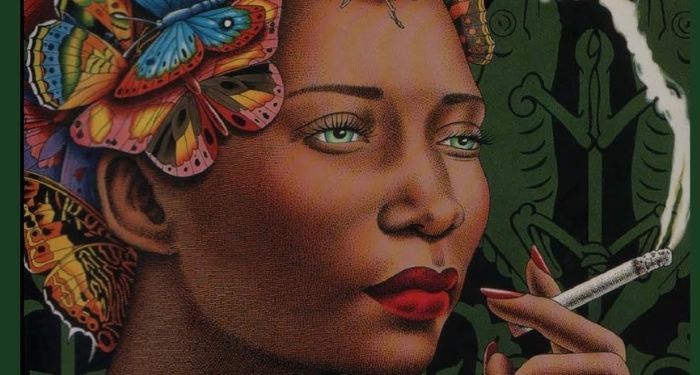Agatha Christie, known as the “Queen of Crime,” was one of the foundational writers of the detective novel. Few authors can top her in terms of intricate plots, sprawling webs of clues, and twist endings. She was not only creative but prolific, penning 66 detective novels, 14 short story collections, and several plays, and created internationally iconic characters like Hercule Poirot and Miss Marple.
Christie’s work has had impressive longevity. Movies continue to be made from her work, most recently Kenneth Branagh‘s A Haunting in Venice. She began publishing novels in the 1920s, and many of them are still popular with readers today, as evidenced by the tens of thousands of ratings they receive on the book review site Goodreads. Here are the ten Christie novels that the site’s users like best. They represent some of her finest and most famous works and are a great starting point for those curious about her work or in search of a good mystery to read.
11
10 ‘The Murder on the Links’ (1923)
Rating: 3.87/5
“If a man commits a crime, any other crime he commits will resemble it closely.” This Poirot mystery begins when the detective receives a distressing letter from Paul Renauld, a wealthy businessman living in France who fears for his life. Upon arriving, Poirot and Captain Hastings discover Renauld has been brutally murdered, found stabbed in the back, and buried in a shallow grave near a golf course. Naturally, the case quickly reveals itself to be highly convoluted, with plenty of dead ends and red herrings—classic Christie.
As with most of the Poirot books, this is a light and fun read, though some of the plot developments can feel a little far-fetched. It boasts a juicy mystery involving love, betrayal, and revenge, alongside generational conflict and several charming characters. The Murder on the Links is also regarded by some as having aged better than most of the Poirot books, making it a decent starting point for those wanting to get into the series.
9 ‘The Body in the Library’ (1962)
Rating: 3.82/5
“If one has got to have a murder actually happening in one’s house, one might as well enjoy it.” The Body in the Library features the iconic Miss Marple in one of her most famous cases. The story begins when Colonel and Mrs. Bantry discover the body of a young woman, Ruby Keene, in their library. Ruby, a dancer at a nearby hotel, was last seen alive the previous evening. As the local police struggle to make headway, Miss Marple steps in with her unparalleled intuition.
The book was praised for being one of Christie’s more realistic works.
Our heroine soon uncovers a tangle of motives involving jealousy, greed, and a disputed inheritance. As usual, she relies on her keen understanding of human nature to crack the case, despite the skepticism of more analytical sleuths like Inspector Slack. On release, the book was praised for being one of Christie’s more realistic works, with a sharp take on the era’s social structures and class dynamics.
8 ‘The Man in the Brown Suit’ (1924)
Rating: 3.95/5
“A diary is useful for recording the idiosyncrasies of other people—but not one’s own.” This adventure centers on protagonist Anne Beddingfield, who is thrust into a whirlwind of danger and intrigue after witnessing a man’s death in the London Underground and finding a cryptic note. Her investigations lead her to South Africa, where she encounters the enigmatic man in the brown suit and uncovers a smuggling ring.
Anne is a spunky and resourceful character, and a frequently funny one. She carries a lot of the book. The African setting, with much of the story unfolding in Cape Town and Bulawayo, is also a refreshing change of pace that helps to make the novel stand out. Christie and her husband took a trip to South Africa in 1922, so The Man in the Brown Suit was obviously inspired by her travels. Finally, the novel is notable for incorporating thriller elements in the third act, including secret agents.
7 ‘The Mysterious Affair at Styles’ (1920)
Rating: 4.00/5
“Imagination is a good servant and a bad master.” The Mysterious Affair at Styles was the very first Poirot novel, kicking off a literary phenomenon. In this one, the mustached investigator is called in to investigate a poisoning at Styles Court, a sprawling estate in Essex. There, Poirot must navigate a web of family secrets, financial motives, and personal grudges, armed with only his meticulous methods and attention to detail.
The Mysterious Affair at Styles is a landmark work of detective fiction and features many of the genre’s defining tropes. For example, it takes place at an isolated country manor, there are several witnesses with secrets to hide, a ton of clues point in different directions, and the plot is loaded with red herrings and twists. These story elements would be beaten to death by countless authors in the decades to follow, but in 1920, they would have been new and compelling.
6 ‘The A.B.C. Murders’ (1936)
Rating: 4.03/5
“There is nothing so terrible as to live in an atmosphere of suspicion.” In The A.B.C. Murders, Poirot is confronted with one of his most challenging cases yet. A serial killer is on the loose, choosing victims whose initials match consecutive letters of the alphabet and leaving an ABC railway guide at each crime scene. The first victim is Alice Ascher in Andover, followed by Betty Barnard in Bexhill, and Sir Carmichael Clarke in Churston. Poirot, along with Captain Hastings, races to prevent further deaths, but they have few leads to go in.
The author also experiments with a slightly unconventional narrative structure.
Christie gets a little more psychological with this story, attempting to delve into the criminal mind. The author also experiments with a slightly unconventional narrative structure, alternating between the first and third person. She pulls off these tricks, making this a strong entry in the series. In particular, Christie nimbly orchestrates a massive web of clues and plotlines that would overwhelm most writers.
5 ‘Murder at the Vicarage’ (1930)
Rating: 4.05/5
“The young people think the old people are fools, but the old people know the young people are fools.” After appearing in several short stories, Miss Marple finally got a book of her own with Murder at the Vicarage. The quiet village of St. Mary Mead is thrown into turmoil when Colonel Protheroe is found murdered in the vicar’s study. The Colonel, widely disliked for his harsh demeanor, leaves behind a plethora of suspects with potential motives. Naturally, Marple gets involved.
The mysteries in this one occasionally verge on the absurd, and some may find the conclusion anti-climactic, but there are more than enough well-written scenes to compensate. The plot clips along at a brisk pace, cramming a lot into the book’s 250-odd pages. Christie also paints a vivid picture of this fictional little town, and it would go on to become highly influential, inspiring the setting of scores of “cozy mysteries” in the future.
4 ‘Death on the Nile’ (1937)
Rating: 4.12/5
“I shall die if I can’t marry him! I shall die!” Death on the Nile is one of the most well-known Poirot stories, having been adapted twice for the big screen. The setting is a luxurious river cruise that is upended when wealthy heiress Linnet Ridgeway is found murdered. Each character has a plausible motive, from Linnet’s jealous best friend to her husband’s jilted lover.
The exotic setting and the confined environment of the ship create a tense and memorable atmosphere. The characters are all well-drawn, and Christie’s gradual unspooling of clues allows the reader to step into Poirot’s shoes and try to crack the case as he does. Not to mention, the plot in this is impressively crafted, with every story element carefully selected and serving a purpose. The result is one of the author’s most timeless books, which remains almost as engaging today as it must have been in 1937.
3 ‘Murder on the Orient Express’ (1934)
Rating: 4.20/5
“The impossible cannot have happened; therefore, the impossible must be possible in spite of appearances.” Murder on the Orient Express is another legendary work by Christie, featuring the same basic idea as Death on the Nile but relocating the drama to the pressure cooker of a train traveling from Istanbul to Calais. A wealthy man is found stabbed, while a snowdrift brings the drain to a grinding halt, trapping the murderer and their potential next victims alike.
The characters are fittingly over-the-top, and the third-act twist is shocking but satisfying.
The book is pure plot in the best way, serving up one meaty scene after another. The characters are fittingly over-the-top, and the third-act twist is shocking but satisfying, feeling like a fair payoff for all the buildup. The seeds of the reveal are planted earlier in the story, so the reader doesn’t feel tricked or blindsided. This might explain why Murder on the Orient Express is among Christie’s most adapted novels. It has served as the basis for two feature films, at least one TV movie, a board game, and several video games.
2 ‘The Murder of Roger Ackroyd’ (1926)
Rating: 4.27/5
“The truth, however ugly in itself, is always curious and beautiful to seekers after it.” Hercule Poirot returns yet again, this time looking into the murder of Roger Ackroyd, a wealthy man in the village of King’s Abbot. Ackroyd’s death comes shortly after he learns a troubling secret about his late fiancée. However, in a pivot, the whole story is narrated by the village doctor, James Sheppard.
The book is renowned for its inventive structure and the unexpected revelation regarding the murderer, placing it among the most acclaimed mystery novels ever. Many consider it to be Christie’s magnum opus. Her clever use of narrative perspective and her skill in misdirection are evident throughout. This adds to the impact of the shocking ending. Indeed, the whole book reveals itself to have been a giant ruse, but an elegant and well-thought-out one. In this regard, The Murder of Roger Ackroyd is seen as having greatly expanded the possibilities of the detective genre.
1 ‘And Then There Were None’ (1939)
Rating: 4.28/5
“Your soul is revealed by your actions.” And Then There Were None is far and away Christie’s most popular book, at least commercially. With over 100 million copies sold, it’s one of the best-selling books of all time. It’s perhaps her best execution of the ‘strangers trapped in a single location’ premise. This time, the plot revolves around ten strangers who are invited to a remote island under different pretexts, only to find themselves accused of past crimes by a mysterious voice. They soon realize they are being systematically killed, according to a sinister nursery rhyme.
This is Christie firing on all cylinders. The story goes way beyond mystery and verges on outright horror. For example, the victims being killed in relation to different lines of a song seems like the inspiration for the seven deadly sin killings in Se7en. “I don’t say it is the play or book of mine that I like best, or even that I think it is my best,” Christie said of it, “but I do think in some ways that it is a better piece of craftsmanship than anything else I have written.”























































![Social Media Spring Cleaning [Infographic] Social Media Spring Cleaning [Infographic]](https://imgproxy.divecdn.com/9e7sW3TubFHM00yvXe5zvvbhAVriJiGqS8xmVFLPC6s/g:ce/rs:fit:770:435/Z3M6Ly9kaXZlc2l0ZS1zdG9yYWdlL2RpdmVpbWFnZS9zb2NpYWxfc3ByaW5nX2NsZWFuaW5nMi5wbmc=.webp)
![5 Ways to Improve Your LinkedIn Marketing Efforts in 2025 [Infographic] 5 Ways to Improve Your LinkedIn Marketing Efforts in 2025 [Infographic]](https://imgproxy.divecdn.com/Hv-m77iIkXSAtB3IEwA3XAuouMwkZApIeDGDnLy5Yhs/g:ce/rs:fit:770:435/Z3M6Ly9kaXZlc2l0ZS1zdG9yYWdlL2RpdmVpbWFnZS9saW5rZWRpbl9zdHJhdGVneV9pbmZvMi5wbmc=.webp)
























